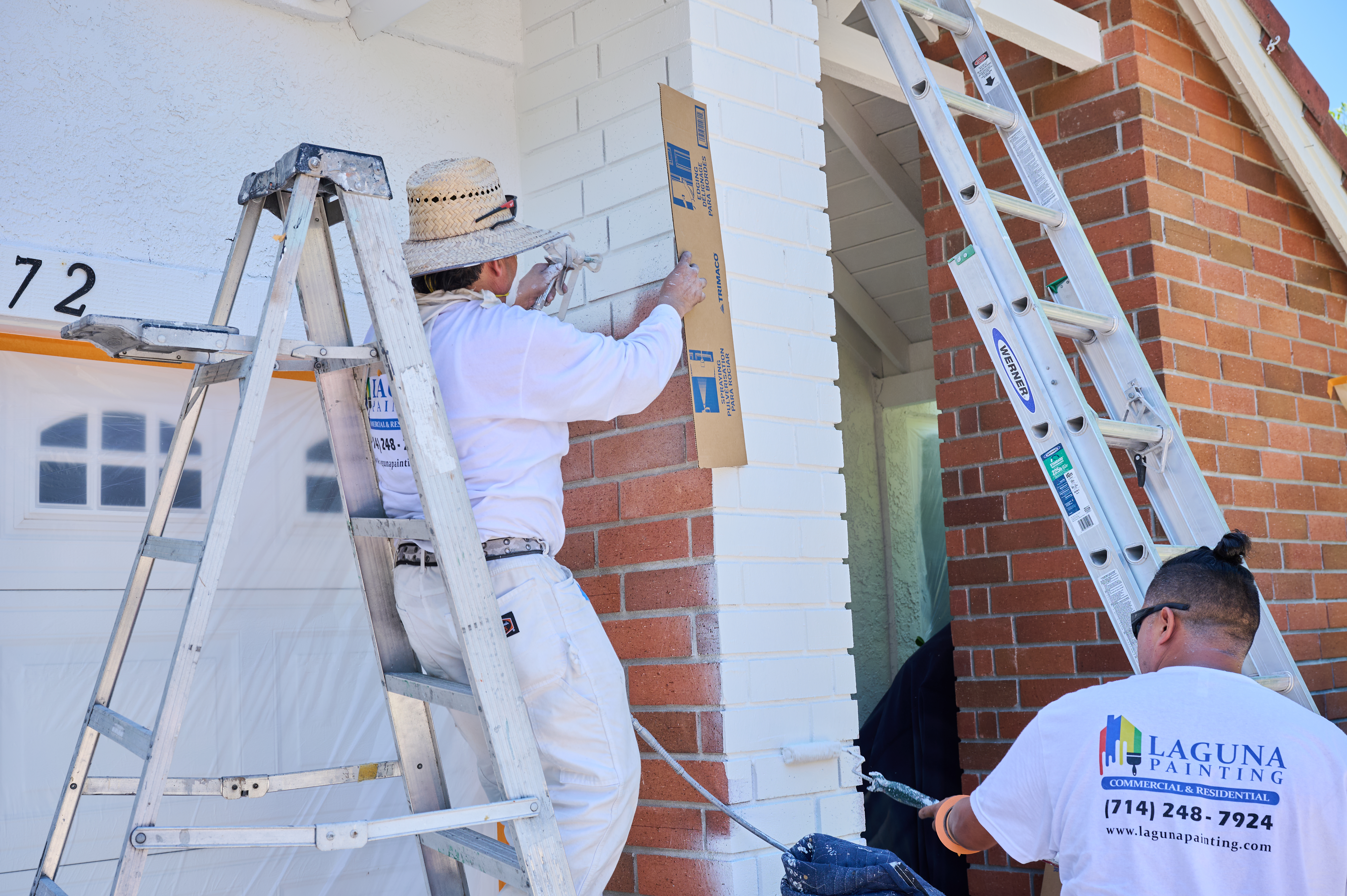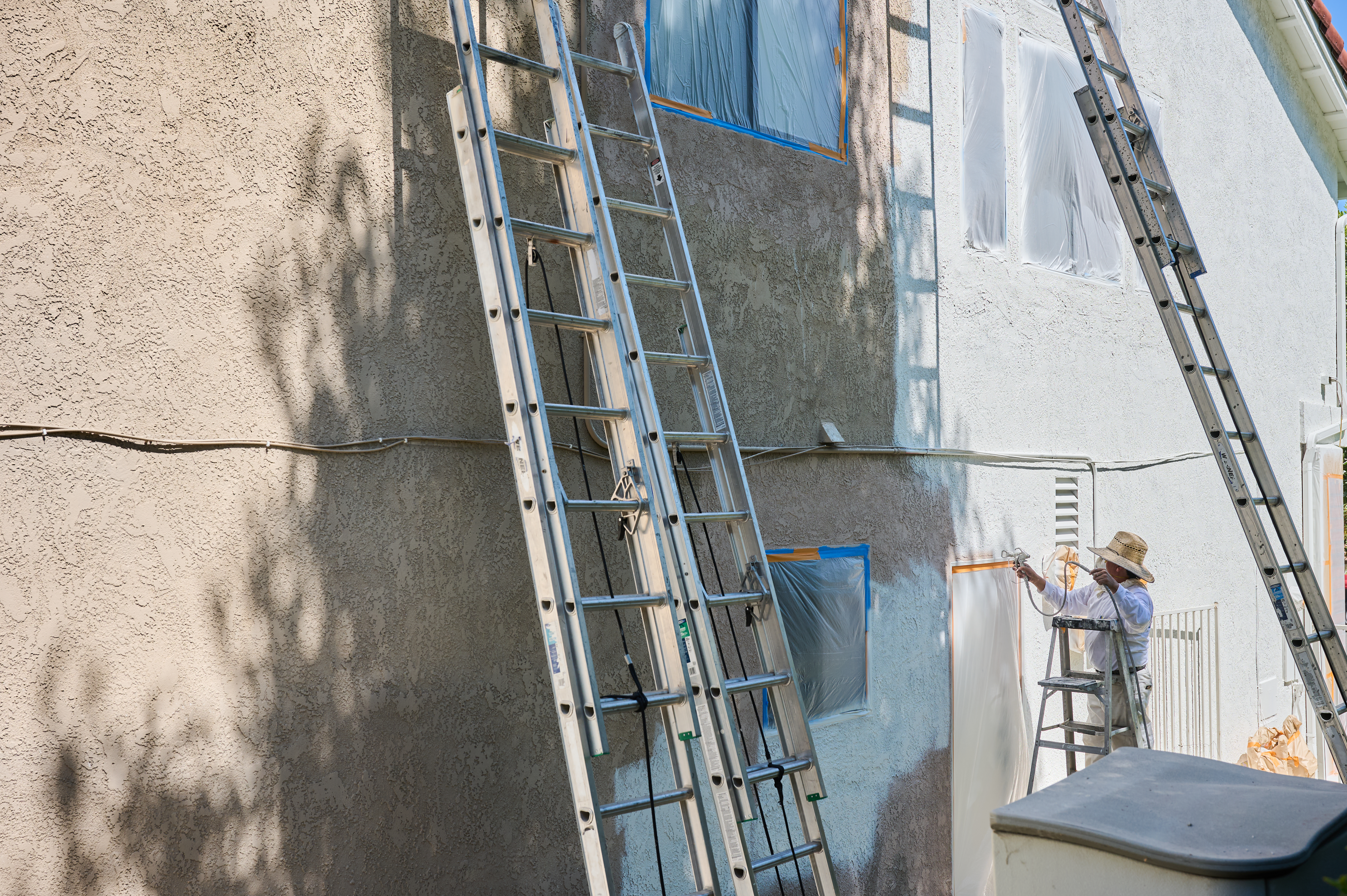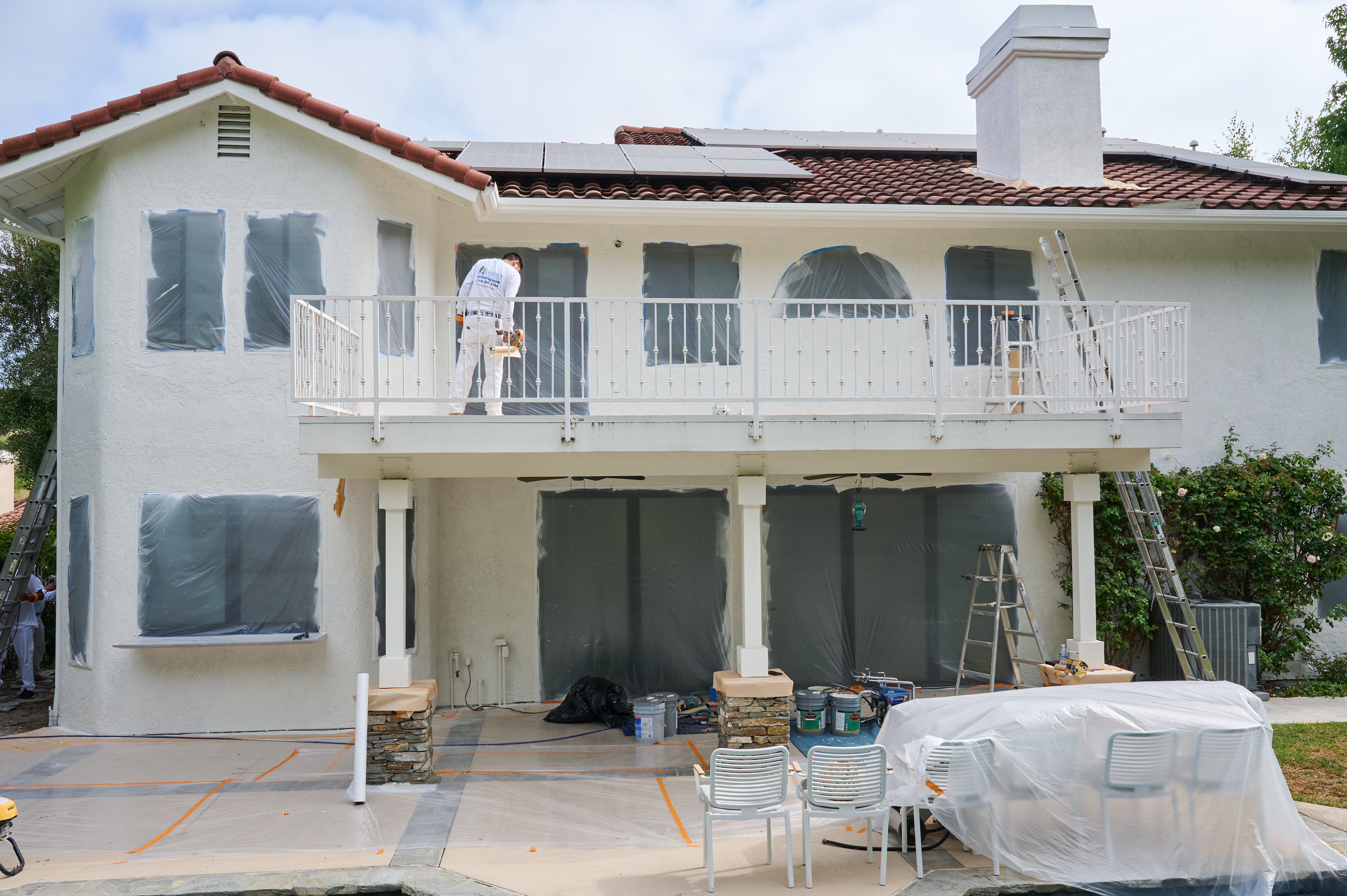
Painting your gutters can give your home the fresh finishing touch it needs to look its best. This guide walks you through the cost to paint gutters.
Texture only spells trouble if you use the wrong paint


You should paint your stucco every five to seven years.
Painting a stucco house costs from $1,400 to $6,000.
Acrylic latex paint is the best paint for stucco because of its breathability.
Some homeowners also use elastomeric paint.
Can you paint stucco? Yes, but only if you do it right. The textured appearance brings major curb appeal and a few potential issues. Luckily, they’re easily avoided with the right paint and a little know-how. Here’s what you need to know about painting your stucco house.

When you picture Spanish or Mediterranean architecture, odds are you’re also picturing stucco. This type of siding has been used on homes for centuries. You’ll find it just about anywhere in the United States, though it’s particularly popular in the Southwest.
Stucco is traditionally made from a mixture of sand, lime, and water. Modern varieties also include cement and other additives like polymers, which help boost flexibility and durability. This type of siding is applied as a wet paste, which dries down into a hard-but-porous material with a classic textured appearance.
You should paint your stucco every five to seven years, caulking hairline cracks as you go. This will help maintain the lifespan of your siding, staving off damaging UV rays and offering some protection against heavy rain.
Though you can paint your siding anytime you want to give your house a makeover, there are a few instances where you’ll want to avoid it. Paint can trap moisture, which leads to issues like rot. To avoid this:
Don’t paint new stucco until it completely sets.
Never paint wet siding.
Do not paint on humid days.
For most homeowners, the cost to paint a stucco house is anywhere from $3,600 to $7,200 or $1.80 to $3.60 per square foot, though if you do the job yourself, you’ll only have to spring for the cost of paint, tools, and supplies. Painting stucco is almost twice as expensive as the average cost to paint a house exterior—but that doesn’t mean you should shy away from hiring a pro to save some cash.
Painting your home is a large undertaking requiring specialized equipment and experience. While many DIY-ers might be perfectly comfortable with the average painting job, stucco takes extra effort and time that professionals are ready to provide. For example, you’ll likely need to stay atop a ladder for an extended period, which poses not just a safety concern but requires patience, given the time it takes to ensure your stucco exterior's coverage is perfectly even all around the home. If you’re not fully confident in handling these aspects, hire an exterior painter near you to get the job done.
You can use various paints on your home’s exterior. The best stucco paints are either acrylic latex paint or elastomeric paint.
Acrylic latex paint is typically the go-to type of paint for stucco. It has a level of permeability that allows the naturally porous stucco to breathe. This helps prevent issues like wood rot underneath your siding. It’s also a more affordable option and relatively easy to apply.
Elastomeric paint, which is designed to protect masonry surfaces, is more durable and water-resistant than acrylic paint. Because it’s so thick, it can fill hairline cracks, so it’s a better choice for stucco that is starting to deteriorate.
Since elastomeric paint can trap moisture, it’s prone to blistering. It can also lead to issues with mold and mildew. Proceed with caution. If you use this type of paint, it’s best to hire a pro who can apply it properly.

Most homeowners choose neutral colors and earth tones for stucco—like cream, beige, taupe, tan, white, gray, or pale pink. That said, you’re not limited. Take a look at the homes around your block, and choose a shade that fits your neighborhood.
When it comes to finishes, flat-sheen finishes tend to be the most forgiving. They’ll hide imperfections in the texture of your stucco. Satin sheen finishes, which are another option, highlight the stucco’s texture. They’re less forgiving but make a bigger statement.
Painting stucco is a similar process to painting other types of siding. You’ll just have to make considerations because of the texture. Here are some tips and tricks to help you paint your stucco siding like a pro.
You’ll need to prep your home’s exterior before painting. This includes cleaning the siding to remove dust, grime, mold, and mildew. Paint won’t adhere well to a dirty house. Since stucco is porous, you’ll need to give it adequate time to dry. Wait at least 24 hours before you paint.
Before painting, use masonry caulk to fill in small cracks in your stucco. This is an essential part of maintenance that will prolong the lifespan of your siding.
A coat or two of paint primer will help paint adhere to stucco, lengthening the lifespan of your paint job and brightening your colors. An acrylic primer is a good option because it adheres well to uneven surfaces, but make sure whatever primer you choose works with your exterior paint.
One gallon of paint typically covers 400 square feet, but expect it to cover 200 square feet of stucco. Because of its textured nature, stucco requires around twice as much paint. Don't forget to factor in multiple coats when calculating how much paint you need for your project.
Mariel Loveland contributed to this article.
From average costs to expert advice, get all the answers you need to get your job done.

Painting your gutters can give your home the fresh finishing touch it needs to look its best. This guide walks you through the cost to paint gutters.

Painting a brick house typically costs between $1.40 and $4.20 per square foot. Your total cost will depend on where you live and the finish you use.

The cost to paint vinyl siding depends on the type of paint, square footage, labor, and more. Check out this guide to help you budget for painting vinyl siding.

You choose it to withstand the elements, but can you paint a vinyl fence? The answer is yes, but it might not be the best when your fence shows wear and tear.

When you hire a painter, you need to understand what goes into painting contracts to ensure your project will go off without a hitch.

The best time to paint a home’s exterior depends on where you live. Read this to learn more about when to paint your house.